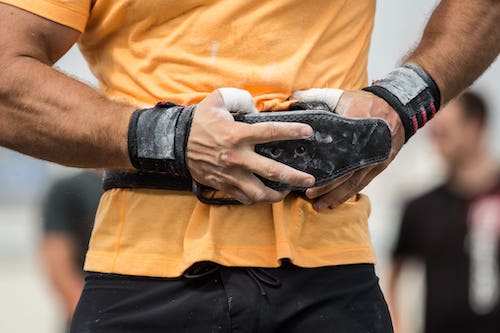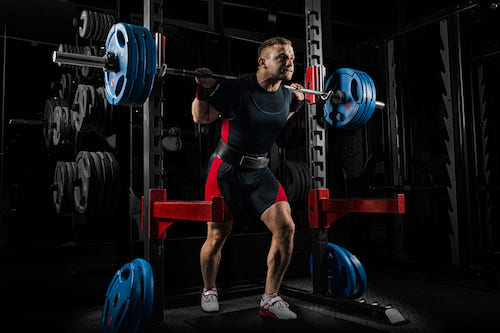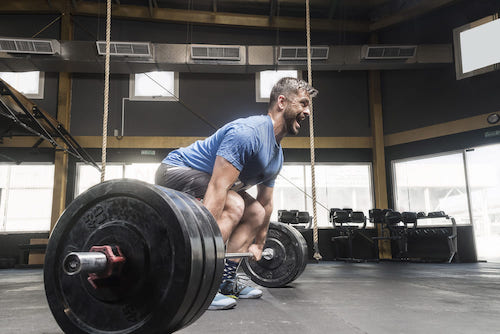Your cart is empty
Start Shopping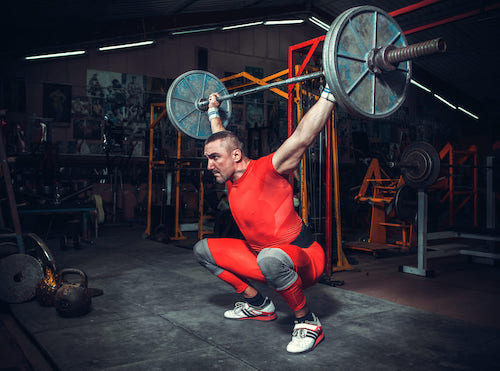
In this article, we will cover all you need to know about squatting in a squat suit, bridging the gap between your raw squats, and trying one out.
So, what is a squat suit? Powerlifters can benefit from wearing a squat suit because it supports their hips and increases its level of assistance as the lifter gets closer to the bottom of the squat, the point at which the movement becomes mechanically challenging.
Many are attracted to equipped squatting because of the excitement of working with heavier loads, the satisfaction of achieving increased levels of technical expertise, and the novelty of its demands.
Let’s throw open the docket and dive headfirst into the realm of heavy lifting.
What is a squat suit?
You’ve probably seen how powerlifting singlets have evolved over the previous decade, becoming a bit thicker, a bit more elastic, and a bit tighter; squat suits are the culmination of this natural growth.
A few decades ago, what began as a “more supporting singlet” has evolved into its own powerlifting class where athletes compete with identical squat suits.
What does a squat suit do?
A squat suit was originally designed to provide the lifter some more stability when they were at the bottom of the squat, the most vulnerable support of the movement.
The modern sport of equipped lifting is a subset of powerlifting in which competitors wear a one-piece, highly supportive, and long-lasting suit constructed of robust and thick polyester material. A squat suit’s benefits extend beyond the simple novelty of being able to lift heavier weights.

How much does a squat suit add?
Unlike a natural powerlifting squat, a squat suit can increase the weight by 22-30%. Putting on a squat suit isn’t going to magically allow a beginner powerlifter to squat more weight without first learning the appropriate technique. After a certain level of practice, however, this is the typical amount a lifter can squat over their raw squat. Experienced lifters with the right gear can notice even more increases.
What are the types of squat suits?
Of the several squat suits available, the Titan Super Centurion is by far the most popular choice at every level of competition.
Because of its superior performance, this suit is worn by nearly all competitors at the IPF World Championships.
Titan super centurion
Titan applied for a patent for the Centurion Squat Suit in 1989.
If you’re just getting into weightlifting, this is a fantastic option you can still get today. Titan has now released the Super Centurion, an improved variant now in widespread usage.
The normal Centurion, with its reinforced seams that give more support in the lift, is still the most popular suit of its kind.
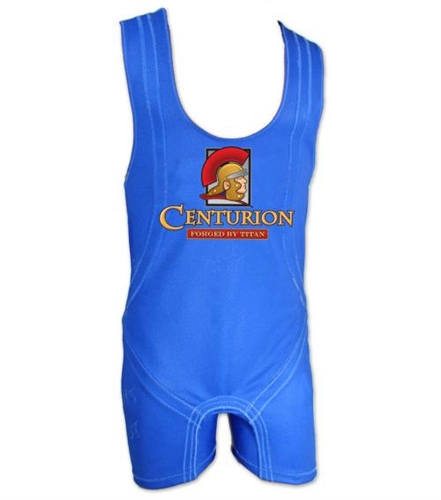
The best lifters in this category all use the same gear, but they’ve made slight modifications to it to suit their own lifting methods better. It is less important what kind of suit you are wearing and more important how well it fits you when deciding what kind of suit you should be wearing.
Wide Stance vs. Regular Stance Squat Suit
Both the Centurion and the Super Centurion are available in Wide Stance and Regular Stance variants (WS and RS).
The legs of the Regular Stance suit are a few inches longer and go further down the outer leg than those of the other suits.
In general, it is advised to begin with the Wide Stance suit since the Regular Stance suit might be less forgiving, putting more material strain on the front of the hips as you drop.
What are the squat suit benefits?
There are four main benefits to working out in a squat suit.
· Longevity in sports is expected to rise.
· Rewarding Technical Expertise
· The feeling of adrenaline pumping through your veins more intensely.
· It’s a great way to level the playing field.
1. Increasing longevity in the sport
It is widely believed that the use of protective equipment, such as powerlifting squat suits, has contributed to extending the duration of many experienced lifters’ careers. This is particularly true for an exercise as physically demanding as the squat!
2. Technical mastery being rewarded
For weightlifters who consider themselves “technicians,” the act of fine-tuning their technique in the squat suit to match their unique squat groove is incredibly satisfying.
3. A greater adrenaline rush
The adrenaline rush produced by squatting with higher weights is unsurpassed. When every rep counts, the payoff for doing it right is enormous, but the room for error is little.

4. Leveling the playing field
For athletes dedicated to perfecting their technique, the equipped category of lifting might provide a more satisfying experience than raw lifting.
A lifter who isn’t very strong in the squat can make up for it by devoting significant time to perfecting their technique in the squat suit and putting more kilograms on the bar. You can “even the playing field” with your level of ability if you spend a lot of time in your squat suit perfecting your technique.
Considerations
It’s up to you to decide if you want to wear a suit while squatting or not. However, it would be best if you aim to compete for at least a year before making the transition to equipped lifting in order to allow yourself enough time to establish a level of strength. Seek advice from more seasoned, equipped lifters if you’re thinking about making the transition from raw to geared lifting, and don’t rush into contests until you’ve had ample time to master the new technique.
Final Thoughts
For lifters, squat suits provide a way to push their careers to the “next level,” enjoy more success and extend their time in the sport. When we examine the differences between squatting naked and squatting while wearing a suit, we see that they aren’t as huge as we may have thought. Finding a properly fitting suit, learning the mechanics of squatting while wearing one, and adjusting your technique as needed are all essential first steps.

